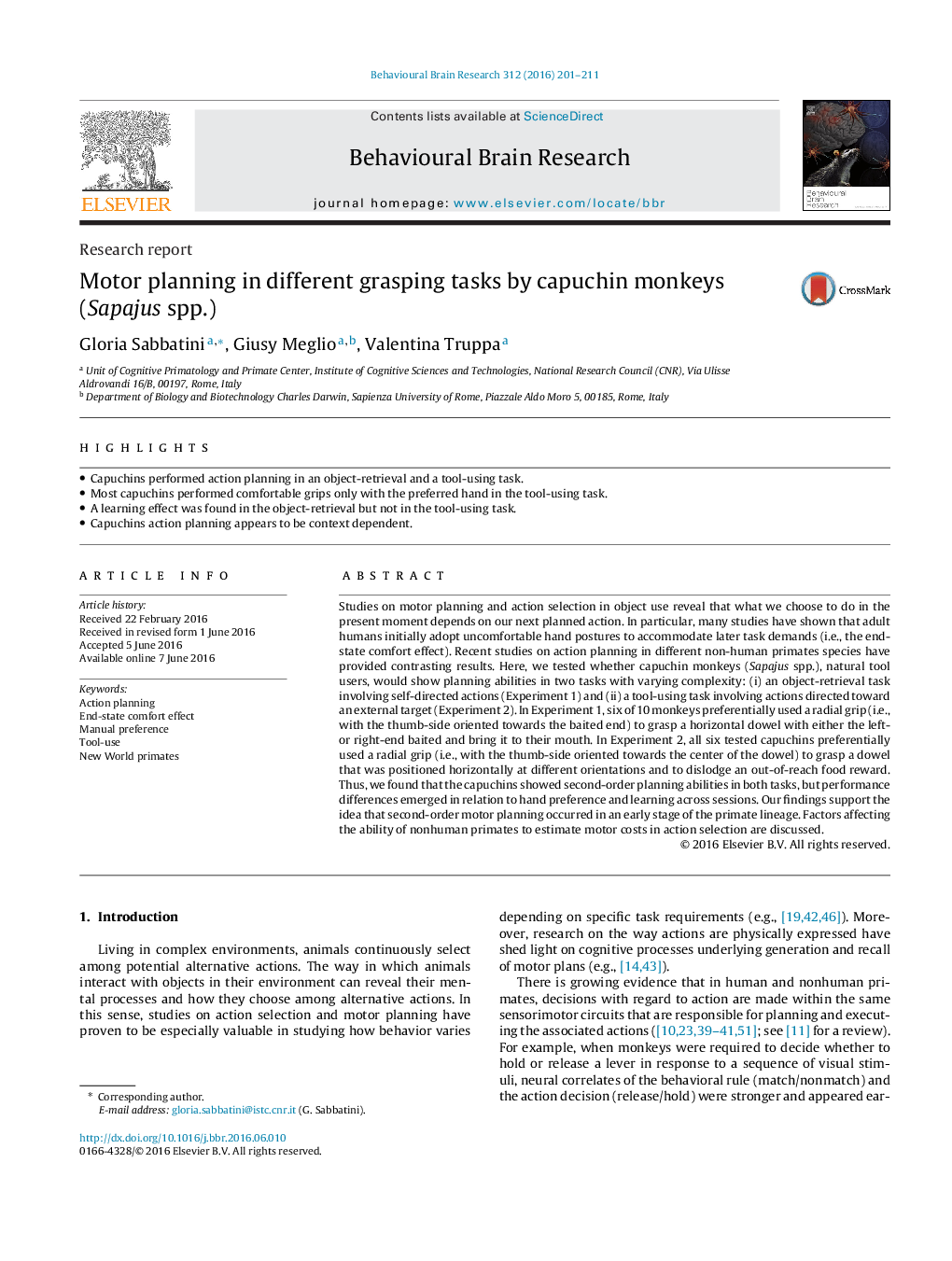| کد مقاله | کد نشریه | سال انتشار | مقاله انگلیسی | نسخه تمام متن |
|---|---|---|---|---|
| 4312071 | 1612921 | 2016 | 11 صفحه PDF | دانلود رایگان |

• Capuchins performed action planning in an object-retrieval and a tool-using task.
• Most capuchins performed comfortable grips only with the preferred hand in the tool-using task.
• A learning effect was found in the object-retrieval but not in the tool-using task.
• Capuchins action planning appears to be context dependent.
Studies on motor planning and action selection in object use reveal that what we choose to do in the present moment depends on our next planned action. In particular, many studies have shown that adult humans initially adopt uncomfortable hand postures to accommodate later task demands (i.e., the end-state comfort effect). Recent studies on action planning in different non-human primates species have provided contrasting results. Here, we tested whether capuchin monkeys (Sapajus spp.), natural tool users, would show planning abilities in two tasks with varying complexity: (i) an object-retrieval task involving self-directed actions (Experiment 1) and (ii) a tool-using task involving actions directed toward an external target (Experiment 2). In Experiment 1, six of 10 monkeys preferentially used a radial grip (i.e., with the thumb-side oriented towards the baited end) to grasp a horizontal dowel with either the left- or right-end baited and bring it to their mouth. In Experiment 2, all six tested capuchins preferentially used a radial grip (i.e., with the thumb-side oriented towards the center of the dowel) to grasp a dowel that was positioned horizontally at different orientations and to dislodge an out-of-reach food reward. Thus, we found that the capuchins showed second-order planning abilities in both tasks, but performance differences emerged in relation to hand preference and learning across sessions. Our findings support the idea that second-order motor planning occurred in an early stage of the primate lineage. Factors affecting the ability of nonhuman primates to estimate motor costs in action selection are discussed.
Journal: Behavioural Brain Research - Volume 312, 1 October 2016, Pages 201–211